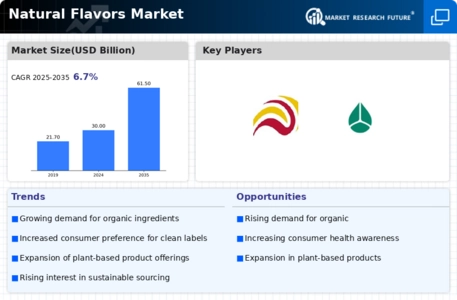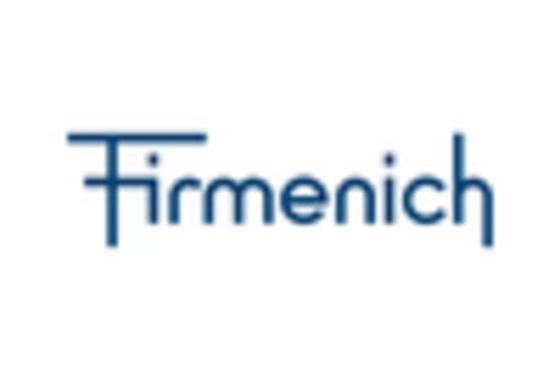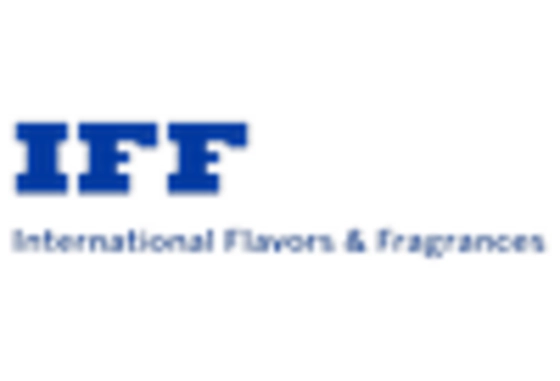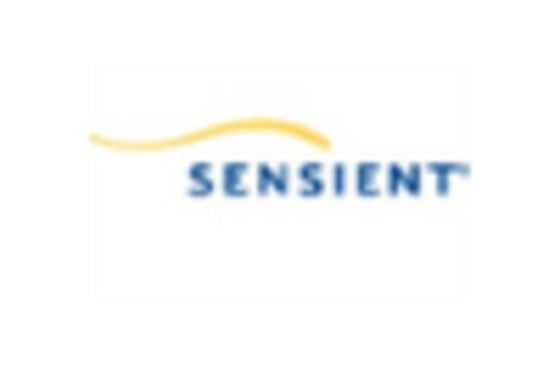The Natural Flavors Market is currently characterized by a dynamic competitive landscape, driven by increasing consumer demand for clean-label products and natural ingredients. Key players such as Givaudan (Switzerland), Firmenich (Switzerland), and International Flavors & Fragrances (US) are at the forefront, employing diverse strategies to enhance their market positioning. Givaudan (Switzerland) focuses on innovation and sustainability, investing heavily in research and development to create new flavor profiles that align with consumer preferences for health-conscious options. Firmenich (Switzerland) emphasizes strategic partnerships and acquisitions to expand its portfolio, while International Flavors & Fragrances (US) is enhancing its digital capabilities to streamline operations and improve customer engagement. Collectively, these strategies contribute to a competitive environment that is increasingly centered on innovation and sustainability.
In terms of business tactics, companies are localizing manufacturing to reduce lead times and optimize supply chains, which is particularly crucial in the context of fluctuating global logistics. The market structure appears moderately fragmented, with several key players holding substantial market shares, yet numerous smaller firms also competing effectively. This fragmentation allows for a variety of flavor offerings, catering to diverse consumer tastes and preferences, while the influence of major players helps to set industry standards.
In August 2025, Givaudan (Switzerland) announced the launch of a new line of organic flavors aimed at the beverage sector, reflecting a growing trend towards organic and natural ingredients. This strategic move not only positions Givaudan to capture a larger share of the health-conscious consumer segment but also reinforces its commitment to sustainability, which is increasingly becoming a key differentiator in the market. The introduction of these flavors is likely to enhance Givaudan's competitive edge in a rapidly evolving landscape.
In September 2025, Firmenich (Switzerland) completed the acquisition of a regional flavor company, which is expected to bolster its presence in emerging markets. This acquisition aligns with Firmenich's strategy to expand its geographical footprint and diversify its product offerings. By integrating local expertise and resources, Firmenich may enhance its ability to respond to regional flavor trends, thereby strengthening its competitive position.
In October 2025, International Flavors & Fragrances (US) unveiled a new digital platform designed to facilitate customer interaction and streamline the flavor development process. This initiative reflects a broader trend towards digital transformation within the industry, enabling IFF to leverage data analytics for more personalized customer solutions. Such advancements are likely to enhance operational efficiency and foster stronger customer relationships, which are critical in a competitive market.
As of October 2025, the Natural Flavors Market is witnessing significant trends such as digitalization, sustainability, and the integration of artificial intelligence in flavor development. Strategic alliances are increasingly shaping the competitive landscape, allowing companies to pool resources and expertise to innovate more effectively. Looking ahead, competitive differentiation is expected to evolve, with a pronounced shift from price-based competition towards innovation, technology, and supply chain reliability. Companies that can effectively leverage these trends will likely emerge as leaders in the Natural Flavors Market.

















Leave a Comment